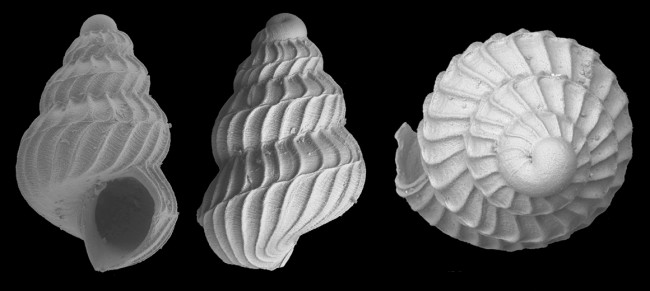The Great Dying
November 20, 2017

Millions of years before the mass extinction that wiped out the dinosaurs, there was the Permian extinction, or Great Dying, the planet’s deadliest mass extinction event, and the event that had the longest recovery.
Two studies led by Jackson School of Geosciences postdoctoral researcher William Foster have shed light on how marine ecosystems recovered from the catastrophic mass extinction event 252 million years ago, and why the overall recovery afterward was slow.
Both center on research of marine fossil beds in Italy. The Permian extinction is linked to climate change caused by prolonged volcanic eruptions in Russia’s Siberian Traps. The eruptions covered an area larger than Alaska with lava and released massive amounts of greenhouse gasses into the atmosphere, which had dire consequences for life across the planet.
The first study, which was published in the Journal of Systematic Paleontology in November 2016, found that fossils show that some species thought to have died out during the Permian extinction had actually survived the event, and others originated tens of millions of years earlier than previously believed.
Many of the fossil shells are unusually small, only a few millimeters in size. But they are so well-preserved that they reveal new details of their body shape and early life stages.
“The exceptional preservation of the fossil shells show how marine ecosystems survive global warming,” Foster said.
The second study, published in the journal PLOS ONE in March
2017, found that life recovered slowly after the Great Dying because of two smaller extinction events that followed the mass extinction.
The extinction events are linked to climate change also caused by massive volcanic activity, said Foster. He added that the study is a step toward understanding how lifeforms survived during the extinctions, which could help scientists understand how modern ocean life evolved and how it might respond to climate change in the future.
Back to the Newsletter